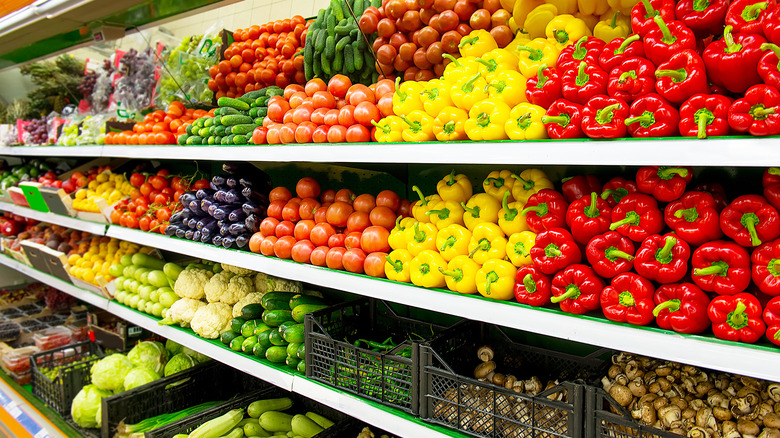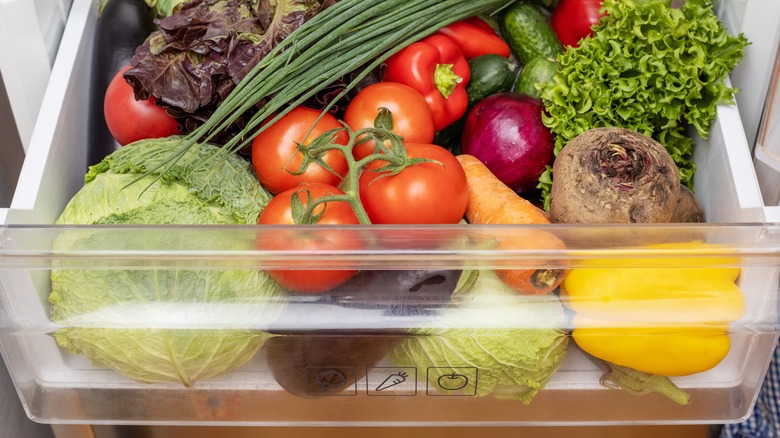This Is How Much Oil You Should Actually Use When Roasting Veggies
Whether they're a main course, a side, or something in between, roasted veggies are a heavy lifter in many meals. And while roasting veggies is a relatively easy and painless procedure, there are many variables to consider, like oven temperature, type of oil, duration of cooking, how to cut the veggies, and more.
When choosing an oil, according to The Kitchn, you want to pick an oil that's not going to burn. In the article, the popular food site claims that olive oil, while imparting tasty flavors to the vegetables it's used with, has a smoke point of around 425, meaning that it burns and becomes rancid when you cook it over that temperature; similarly, ghee burns at over 450. If it's a more neutral oil you desire, vegetable, grapeseed, or canola can be good choices.
Once you've decided what vegetables you're cooking and which oil you're using, it's time to figure out how much oil to use. And while it may be tempting to channel your inner chef and slather on a random amount, it can pay to be precise.
Not too much, not too little
As per The Kitchn's list of mistakes to avoid when roasting vegetables, the first tip is "not cooking the vegetables with enough (or too much) fat." The list suggests that if you use too much oil, the veggies can turn out greasy, while too little will make them dry out. Their foolproof ratio is simple: "use one tablespoon of oil per pound of veggies."
Once you've deciphered the type and amount of oil you're using, you'll want to decide what temperature to set. Over at Epicurious, it's recommended that denser and sweeter veggies need lower temperatures, like in the 375 to 400 range; more watery veggies can be cooked at 450 or higher. But in general, they say 400 degrees for half an hour to an hour is a pretty safe bet.
So, to synthesize, if you start with a tablespoon of olive oil for a pound of veggies cooking at 400 or so for half an hour to an hour, you should wind up with something pretty tasty. When you get over 425 degrees, you'll want to trade out the olive oil for something with a higher smoke point, like grapeseed or canola. Using the right amount of oil is key, so if you're diligent about that, you'll likely be in the clear.

